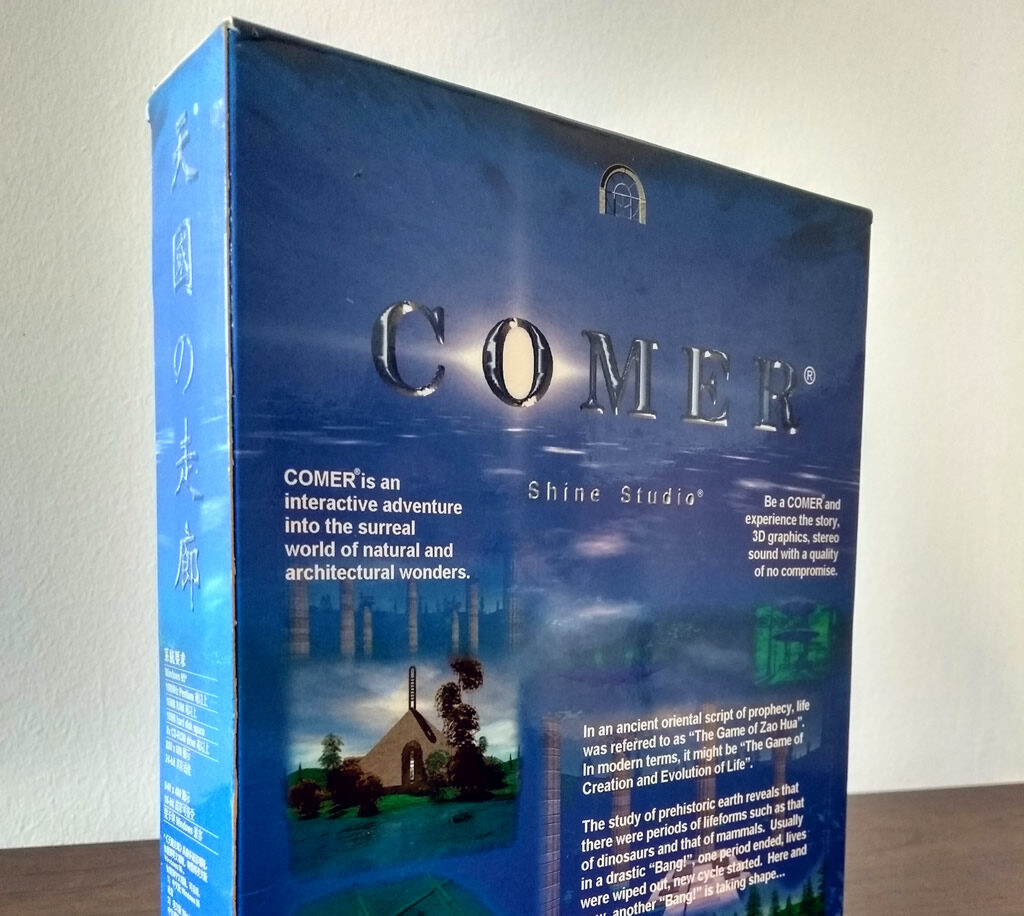Let’s end the year with something new and exciting: I’ve published an article in ROMchip: A Journal of Game Histories!
Over the summer, a reader sent me a rare physical copy of Comer, a spiritualist CD-ROM adventure game that was produced entirely by one person from Hong Kong. Not only did the designer Kyle Choi make it entirely by himself with no prior game development experience, but he manufactured and published it by himself as well. That was no small feat in 1998!
Comer is an extraordinarily weird game, and seeing a physical boxed copy of Comer drives home the fact it doesn’t fit into any standard mold of video game production. So where does it belong in gaming history? That’s the big question in my article, “The Long Silent Journey of Kyle Choi’s Comer,” which is now available in the latest issue of ROMchip.
ROMchip is the first academic journal dedicated to gaming history. It was a great experience to work with their editorial team, and I’m excited to have the opportunity to bring my perspective on the weird outliers of video game history to an academic publication. This is an open-access journal, which means anyone can read this article for free without needing to sign in or get a subscription.
Since this was written for an academic journal, it’s more formal than my usual writing, but I hope it’s still fun and interesting to read! And while you’re there, check out the rest of the issue, which includes an essay about using historical materials to understand game production, as well as article about reconstructing political games from 1980s Czechoslovakia.
